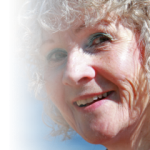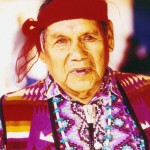 Where do we find love? Where do we bestow our love? Where are the places of beauty? These questions, in their essence, have the same answer: In the places, inner and outer, where we open our heart to see more fully, and feel grateful for, what is directly in front of our eyes. Yet, such places can remain overlooked, unseen and, therefore, unknown. I recall a poignant quote by Andre Kertesz, a 20th-century photographer, who once said: “The eyes are blind when the heart does not see.”
Where do we find love? Where do we bestow our love? Where are the places of beauty? These questions, in their essence, have the same answer: In the places, inner and outer, where we open our heart to see more fully, and feel grateful for, what is directly in front of our eyes. Yet, such places can remain overlooked, unseen and, therefore, unknown. I recall a poignant quote by Andre Kertesz, a 20th-century photographer, who once said: “The eyes are blind when the heart does not see.”
Such words would resonate in the heart of Piero Ferrucci, psychotherapist, philosopher and author of several inspiring books, which include Beauty and the Soul (2009). This book’s subtitle reads: The Extraordinary Power of Everyday Beauty to Heal Your Life. Here Ferrucci expounds upon the power within each and every one of us to awaken our consciousness to become more fully who we can be.
Among the marvellous qualities of Beauty and the Soul is Ferrucci’s down-to-earth, anecdotal style, through which he relates touching stories of the transformative moments in the lives of a diverse range of individuals, as well as in his own life.
These accounts are alongside several mentions of scientific, medical and educational studies that now provide empirical proof on the potentialities of human consciousness that have been manifested since almost the beginning of time – well, at least, approximately 1.8 million years ago.
Ferrucci cites the research of Steven Mithen, author of The Singing Neanderthals, in which the study of anatomy, neurology and archeological findings concludes, as Ferrucci sums up: “We are musical organisms, we are born with rhythm and melody in our DNA. Music, song, and dance have been essential in our bonding in groups and this social competence has given great advantage to our capacity to survive” [Ferrucci, 2009, p. 180].
As Ferrucci tells us, Mithen’s most recent theories of cognitive archaeology deepen the evidence that artistic expression always has been an essential aspect for human survival. It resides in the evolved relationship so long ago between three abilities: (1) producing a mental image and wanting to represent it in concrete form; (2) understanding the meaning of that image; and (3) being eager to share it with others. The confluence of these three abilities signified “a huge leap in our evolution. To be creative means to be fully human” [p. 100].
Ferrucci also cites ethnologist Ellen Dissanayake, who ascribes our aesthetic sensibility to our longing for mutuality: “According to Dissanayate, mutuality is one of the four basic psychobiological needs that generate our need for art. The other needs are: the sense of belonging to a group, the need to understand and create meaning, the need to make artifacts with our hands and thus to show our competence” [p. 179].
Beauty and the Soul is a book that touches the human soul, in bequeathing hope and possibility in how the human family can heal itself, and learn how to get along as a planetary family in relationship with everyone and everything that we cherish on our planetary home. That is why I first emphasize the universal experiences that Ferrucci describes in his book, as a loving gift to humanity, to show us what we hold in common.
What particularly resonates deeply in my own soul, as a writer, is the way in which Ferrucci presents the beauty of literature, embodied in age-old storytelling:
“This, too, is a universal passion, which started with the discovery and management of fire and the development of language… All people of the Earth, even those apparently most primitive, tell and listen to stories… This activity has had a huge advantage for the development of our mind and personality: It trains us to understand others and put ourselves in their shoes, to think up different ways of facing a situation, and to explain the world around us. There could be no better exercise for our brain… Here, too, we see how the search for and creation of beauty are part of our being, a primary survival tool” [p. 182].
I share the above passages of Ferrucci’s book, a book important in so many ways, in the hope that many school teachers read my blog post – then read Beauty and the Soul – and parents as well, who are concerned about the type and quality of schooling that is shaping the lives of your children. Too often, the arts are considered trivial and the first curricula to be cut when budgets are limited – a perennial excuse to cut the arts.
On that educational note, by the way, Ferrucci, bless him, cites a few studies, such as a study in the United States that indicates that where schools included 20 to 30 per cent art appreciation and expression, the academic results were much better in all subjects.
He also cites the work of Dee Dickinson of New Horizons for Learning, on the importance of the arts to break through ethnic and social barriers: “They [the arts] are symbolic systems as important as letters and numbers. They integrate body, mind, and spirit and offer students the chance to express themselves. They facilitate `peak and flow experiences’; that is, expansion of consciousness. They stimulate the motivation to learn. They develop both independence and collaboration, and thus improve socialization. They exercise intellectual abilities, such as analysis, synthesis and problem-solving” [p. 199].
Some of Ferrucci’s observations, in fact, speak to and challenge the disconnectedness in Western culture, in its approach to socialization processes, and the commercialization of beauty, that places so many obstacles along our life path to experience beauty in its natural life-giving essence. Experiencing authentic beauty is not based on money.
He presents a marvellous yin-yang approach to the profound attachment that the human species has to physical beauty. In other words, there is a positive aspect, biologically based, yet also the shadow side in regard to how we have become so preoccupied with outer beauty, today culturally-based.
Ferrucci addresses the phenomena of beauty through the range of experiences that we have in everyday life, from the ways, and reasons why, we respond to natural and cultural environments to the processes of each person’s unconscious or inner ways of knowing, such as emotions and intuition.
Eco-psychology, for example, speaks to our innate “ecological unconscious”: “Deep down, we feel separated from a wisdom and a beauty which we cannot afford to lose, in fact, from the source of life” [p. 111]. Ferrucci points out the negative impact on our psyche from urban noise pollution to obsessions about acquiring material goods in a consumer-driven society.
Many anecdotes within Beauty and the Soul are deeply moving in relating the ways beauty is available to us so freely, from when we awaken to our own capacity to discover it to when opportunities are given. Beauty has profound healing qualities in our personal lives. We can find beauty everywhere and in unexpected places.
Ferrucci relates diverse examples of the healing power of beauty, through the arts and otherwise, in conventional and alternative healing environments. He identifies, for example, the Natural Growth Project in the United Kingdom, devoted to treating torture victims through processes of rehabilitation such as gardening and other creative forms of self-expression, supported by organic gardeners and psychotherapists.
One of my favourite anecdotes is the story about Luciano, who experiences profound pleasure in restoring old and discarded objects to their original beauty. This act, for Luciano, is not only invested in the outcome yet, moreover, in the nurturing process to regenerate and show reverence, especially for hand-crafted items. Another, symbolic level of meaning for him, during his pursuit to restore an old pair of skiis, was his hope for the recovery by his father from a long term illness.
That brings us to another significant level of beauty on which Ferrucci elaborates – inner beauty. In other words, how much do we give power to the external conforming pressures of society that sometimes shape shift us away from who we really are? Why is it important to figure out how to toss away the social mask and reveal our true Self?
Indeed, awakening our capacity to give, and receive, love very much is influenced by the various ways in which we can see beauty in the world around us and the people who inhabit it. The key is our willingness to open our heart to do so.
The inherent beauty of this book, in summary, is that Ferrucci emphasizes where we can discover and replenish our inner wholeness and the connection with our soul, while he also presents the folly of today’s world that is so sadly out-of-balance.
Piero Ferrucci’s shared wisdom facilitates a pathway for us to find our way home again, home to our soul and what really matters.
One final note, I was honoured to spend time with Piero Ferrucci in 2005, near Florence, Italy, during research for my documentary film on his mentor Roberto Assagioli. Although the commercial media has no interest to support such a film, I pray, and persevere to write, research and produce Assagioli’s life story at a future time, for a growing public who seeks understanding to create a more hopeful life.


